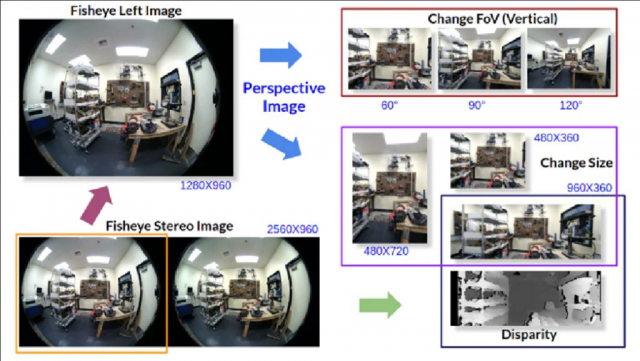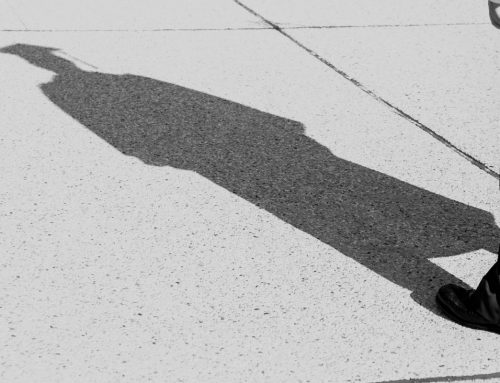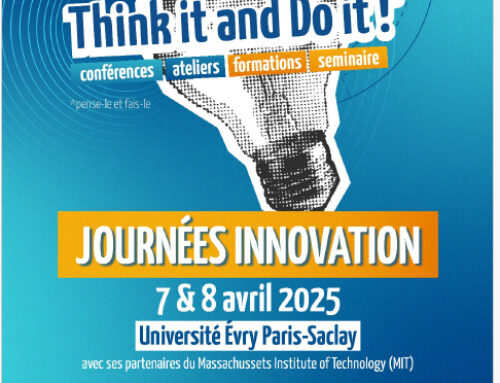TITLE : 3D reconstruction using Fisheyestereo camera
Cameras with large field-of-view have become increasingly popular and affordable. These systems consist of multiple perspective cameras that are rigidly attached to the same support or combine mirrors and wide-angle (fisheye) lenses to conventional cameras. Thanks to their ability to capture a scene from all around, these low-cost sensors offer new opportunities for image-based 3D reconstruction.
Stereo-vision methods consist of recovering depth from two images of the same scene. Indeed, two images and their geometric relationship are exploited to estimate the depth information and, thus, the 3D point cloud. Each 3D point corresponds to a 2D image point in one of the images. The literature has extensively investigated these methods when the stereo system comprises two conventional or perspective cameras. However, very few works have been proposed in the literature for large field-of-view cameras, such as fisheye [1][2] or catadioptric systems [3] (combining a mirror and a perspective camera).
The main objective of this internship proposal is to study the problem of stereo vision using a fisheye stereo camera. After calibrating the system through the software CaliCam, the fisheye images will be first represented onto the spherical space, which is adapted for large field-of-view cameras. Then, the geometric relationship between the two spherical images will be
established. Existing algorithms for conventional stereo vision can thus be adapted for fisheye stereo images. The proposed technique will be evaluated using the stereo fisheye camera from ATAR. A comparison with traditional stereo cameras will be realized.
Internship work plan
- Addressing the state-of-the-art of different solutions on using multiple views geometry for cameras with large field of view.
- Establishing the geometric model of the fisheye stereo system using a unified central projection model (based on the unit spherical space).
- Calibrate the fisheye stereo camera and analyze the first result of 3D reconstruction using the open-source software proposed by ASTAR-AI.
- Experimental evaluation of the 3D reconstruction accuracy from closer to farther 3D objects to the fisheye stereo system.
- Experimental comparison of the 3D reconstruction using a fisheye stereo camera and a conventional stereo camera. Skills required
Knowledge required in computer vision, 3D reconstruction, and multiple-view geometry. One of the following development languages is required: Matlab, C++, or Python. This internship is adapted to Engineering school or Master’s degree in research.
Location and duration
The internship will take place at the IBISC laboratory of University of Evry – Paris Saclay, 40 rue du Pelvoux 91000 Evry-Courcouronnes. Internship duration of 6 months, beginning in Spring 2024.
Contact
Hicham Hadj-Abdelkader, Associate Professor, IBISC lab.
References
[1] J. Caracotte, F. Morbidi, E. Mouaddib, “Photometric Stereo with Twin-Fisheye Cameras”, in Proc. 25th Int. Conf. Pattern Recognition (ICPR), pp. 5270-5277, 2021.
[2] J. Caracotte, F. Morbidi, E. Mouaddib, “Photometric Stereo with Central Panoramic Cameras”, Computer Vision and Image Understanding, vol. 201, art. 103080, December 2020.
[3] C. Cai and R. Qiao, “An Improved Calibration Method for Stereo Fisheye Vision”, 2021 33rd Chinese Control and Decision Conference (CCDC), Kunming, China, 2021, pp. 3158-3162.
- Date de l’appel : 27/11/2023
- Statut de l’appel : Non pourvu
- Contacts cotés IBISC : Hicham HADJ-ABDELKADER (MCF Univ. Évry, IBISC équipe SIAM), hichamDOThadjabdelkaderATuniv-evryDOTfr
- Sujet de stage niveau Master 2 (format PDF)
- Web équipe SIAM





